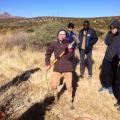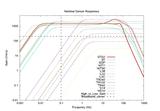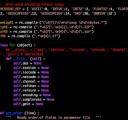
On Friday, November 1st 2013, a group of students and teachers from Bethesda, Maryland's Lycée Rochambeau/ French International School visited the EarthScope/EPIC facility on Socorro NM for some hands-on demonstrations of how seismic measurements are used to "see" geological strata underground. The class, led by instructor Marc Roux, head of the Biology and Geology Department, were assisted by EPIC scientists Greg Chavez and Michael Johnson during the deployment of a long string of geophones and a multi-channel data acquisition system. The students then used heavy hammers to produce active source tremors, and then were able to see the seismic responses in real time. The class assembled in the EPIC conference room to hear EPIC scientists/data specialists Dr. Wallis Hutton and KatyLiz Anderson discuss how such measurements can be used to find the depth of subsurface structures like the Moho. The visit was capped with a tour of the EPIC facility, led by scientist/software engineer Dave Thomas. (Photo: student Salomé Carcy; credit: Dr. Wallis Hutton)








